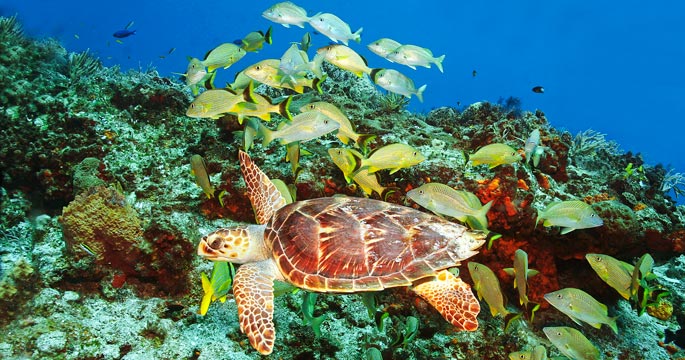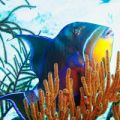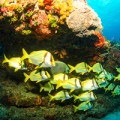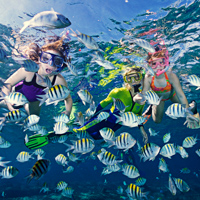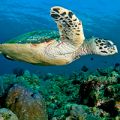At beaches across the Caribbean, these hard-shelled swimmers are the star attraction
Any snorkel trip is better when there’s sea life to see, especially if it’s a sea turtle. An encounter with one of these aquatic ancient mariners never fails to delight. And thanks to an ever-growing range of conservation programs and nesting sanctuaries on islands across the Caribbean, you stand a good chance of seeing turtles at snorkel sites all across the region.
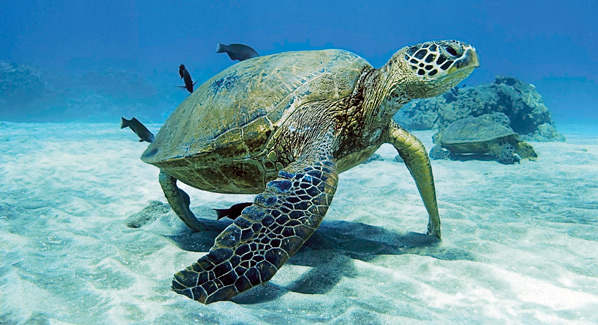
You don’t need to be snorkeling above a coral reef to find a green sea turtle, as they often patrol grass beds and sand-bottomed shallows, and can be quite tolerant of human presence. Photo: iStock
The turtles you are most likely to find swimming close to shore are the juveniles, with shells anywhere from the size of a dinner plate to a cafeteria tray. These youngsters, which may be anywhere from three years up to around age 20, are often curious, and may even approach snorkelers. Less often seen are the adults, which can reach sizes of five feet or more, and weight up to 500 pounds. If you do see a big turtle close to shore, it is most likely a mom, getting ready to come ashore and bury a nest of eggs in the sand, or resting up after doing so. These tired moms usually just want to be left alone, and you should respect their boundaries and not disturb their rest.
There are three species of sea turtles you may run into in Caribbean waters, and the best way to tell one from the other is by looking a their beaks. If the turtle has a bulled-shaped head and a short, flat beak, you’ve found a green turtle. Young green turtles are the most commonly seen turtles on Caribbean reefs, especially in destinations such as St. Thomas’ Turtle Bay, Grand Cayman’s West End and the west coast of Bonaire. They are often found cruising the shallows in search of small critters. As they mature, greens turn to a vegetarian diet, and you are more likely to find them grazing on sea grasses and algae.
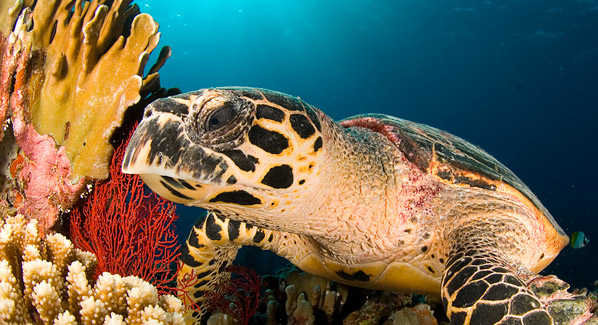
The hawksbill turtle takes its name from its bird-like beak. They use this beak to peck at sponges, and a single turtle can eat up to 1,000 pounds of sponges a year. Photo: Rainer von Brandis/iStock
Turtles with pointed bird-like beaks are aptly named hawksbills. Around islands such as St. Lucia, Barbados and Tobago, where reefs are rich in soft coral growth, you are likely to spot one nibbling on a sponge, which is their favorite food. The third turtle you may run across is the loggerhead, which get’s its name from its large, log-like head. These are less often seen on shallow reefs, as they roam far and wide in search of a meal. One of the best places to find loggerheads on a consistent basis is Akumal Bay on Mexico’s Rivera Maya coast.
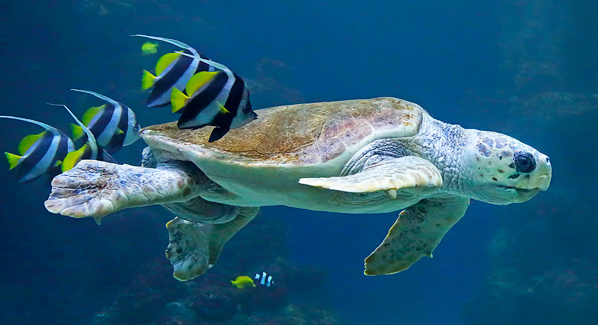
Loggerhead turtles have large blunt heads, which contain powerful jaws used to crack the shells of conchs and others shellfish, which make up much of this animal’s diet. Photo: H. Damke/iStock
The key to a successful interaction with a sea turtle is patience. A rapid, direct approach will likely startle the animal, and cause it to swim away. Instead, move in on sleeping or feeding turtles slowly and deliberately, and stay outside their comfort zone, which is usually around an arm’s length. If you come upon a swimming turtle, try to match its pace while moving in the same direction. You can then begin to subtly close the gap until you are cruising in formation, sometimes as close as a few feet apart. As long as you don’t seem like a threat, the turtle will likely keep going about its business, providing you with a long and very memorable encounter.

